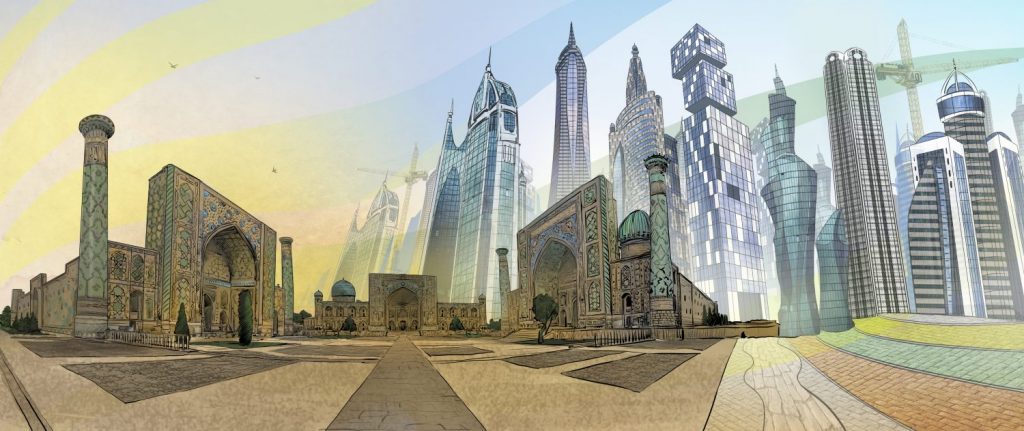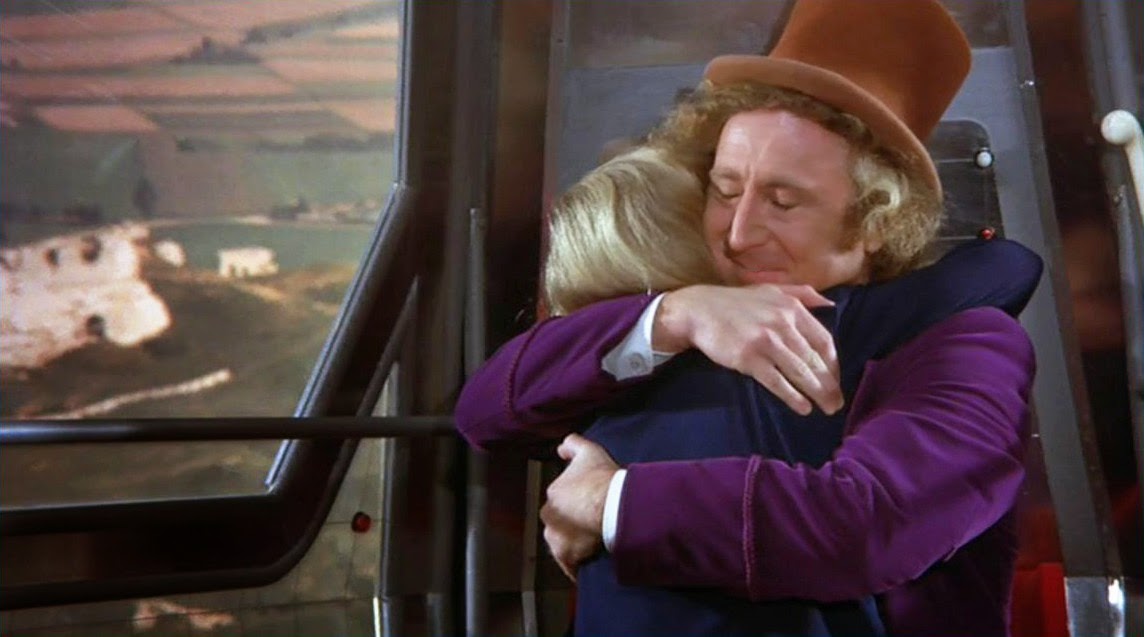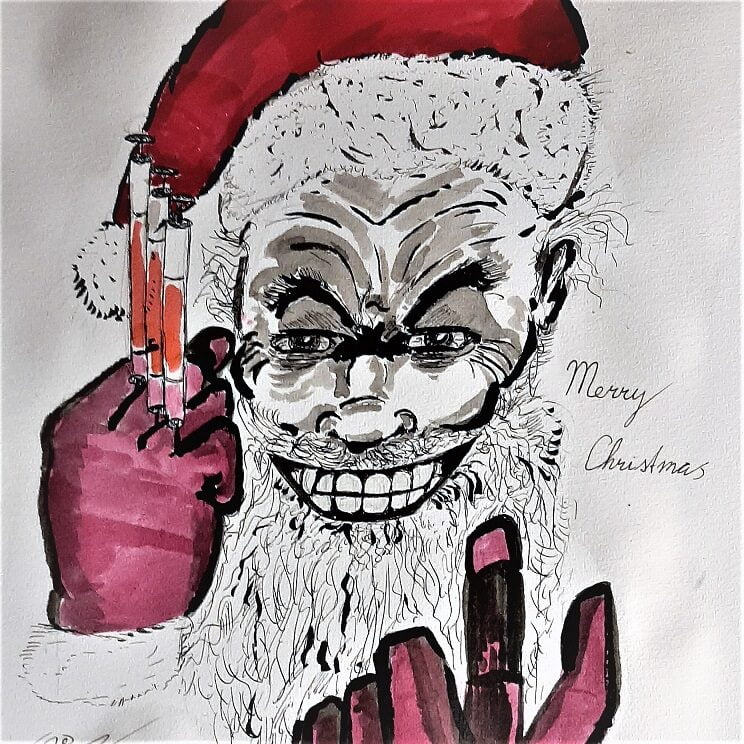
Uzbekistan has a strong background in drama, music and dance. As in so many areas of Uzbek culture, there are two broad sectors: indigenous Uzbek performing arts (with classical and folk subsections) and international/European arts. There is no sharp divide between foreign and indigenous traditions: they overlap and intermingle in structure, motifs and performance techniques. Moreover, individual performers will often be equally skilled in the Uzbek and Western classical traditions.
The culture of Uzbekistan is vibrant and unique—it was formed over thousands of years, incorporating the traditions and customs of the peoples who at various times inhabited the territory of modern Uzbekistan.
The ancient Persians, Greeks, Arabs, Chinese, Russians, and nomadic Turkic tribes have all contributed to Uzbek culture, which is considered the epitome of Central Asian, crossroads cultures. The traditions reflecting the multinational nature of Uzbekistan are omnipresent in its music, dance, painting, applied arts, language, cuisine, and clothing. Each region of Uzbekistan has its own unique shades as well, which are most clearly manifested in national dress and local dialects.
To get acquainted with such richness and diversity, one must travel around the whole country, but the festivals of Uzbekistan are a great events for those who want to see the whole palette of culture in this country in one place. The festivals attract creative souls from all regions of the country, and here that you can see the full assortment of Uzbek dances, music, applied arts, etc.
National Academic Drama Theatre of Uzbekistan
The performances of different genres on the stage of the Uzbek National Academic Drama Theater – comedy, drama, tragedy, classical works and plays by contemporary authors. The performances of comedies show various everyday situations, using human humor, technique of traditional street theater, as well as modern interpretations of ancient customs. In the lecture theater has 540 seats. Tickets can be purchased in advance or directly before the performances.
Theatre began its history in 1914, when Abdullah Avloniy created a troupe called “Turon” Later, the company has become a professional drama theater, received the title of Academic Theater in 1937 by the decision of the government.
Youth Theatre of Uzbekistan
The history of Youth Theatre of Uzbekistan (the former Theatre of Young Spectator) began in 1928 when the doctor S. Etien and the artist S. Malt decided to create the theatre and with the group of enthusiasts performed the play “Uncle Tom's Cabin” by motifs of famous novel by Harriet Beechet Stowe.
Since 1991 the leader of the theatre became the Honored Art Worker of the Republic of Uzbekistan Nabi Abdurakhmanov and the group of the theatre-studio “DARD”, which he founded in 1988, joined the troupe of the theatre. It was the time of great changes in repertoire politics, creative process, training of new personnel and internal structure of the theatre. Since 1997 the theatre became the member of International Association of children’s and youth theatres – ASSITEJ, and Nabi Abdurakhmanov became the president of its Center in Uzbekistan. In 1998 the Tashkent Theatre of Young Spectator was renamed as Youth Theatre.
"Ilkhom" Theatre
The Theatre "Ilkhom" is the professional non-state theatre of Uzbekistan. The theatre was founded in 1976 by the director Mark Weil and a part of the group of Tashkent Theatre Institute graduates. Initially the theatre had the name of ESTY the "Ilkhom" (Experimental Studio of Theatrical Youth-actors, artists, musicians, theatricals). Theatre team did plays based on works of modern and young playwrights of Vampilov, Zlotnikov, Bashkbekov, Guseynov, Razumovskaya. Plays of the theatre outstripped time. Thus after the period of Perestroyka, when other theatres obtained the freedom, "Ilkhom" lost interest in traditional plays and sank into the miming theatre. From 1989 this Tashkent theatre was called, simply, The "Ilkhom" Theatre. It was the year of founding of its own drama school at the theatre. The graduation project of the 1st studio became the fantasy play based on C. Gozzi’s «Happy Beggars», where director of the play could assimilate the traditions of dell’arte comedy with traditional national Uzbek comedy «Maskhoroboz». This play is still popular among spectators even today.
The repertoire of "Ilkhom" theatre is notable for the width of range: plays of this theatre never leave their spectators to be indifferent. All plays are distinguished with its non-triviality. ILKHOM is the little Tashkent theatre, and the division between the stage and auditorium is quite relative. In some plays the auditorium becomes the place of action and audience turns into immediate participants of the show. So in the Aeschylus’ drama of “Orestaya” an audience acts as the jury and decides “whether to execute or to give the pardon”. In addition “ILKHOM” holds various exhibitions, concerts and festivals. The theatre with great success took part in many international theatre festivals in the United States, Norway, Denmark, Poland, Germany, France, Russia, Lithuania, Israel, Japan and other countries of the world.
Unfortunately the high-minded inspirer, director and creative director of the theatre Mark Weil was killed on September 07, 2007. But his deed goes on living and the theatre team does everything that to preserve the priceless cultural heritage, left by the Master.
State Opera and Ballet Theatre named after Alisher Navoiy
The history of the theatre started in 1929, when amateurs of concert-ethnographic group began to work under the leadership of M. Kari-Yakubov and founded the professional theatre. In 1939 it was renamed to the Uzbek State Opera and Ballet Theatre, and in March of 1948 it was united with Russian theatre and called as the State Opera and Ballet Theatre named after Alisher Navoiy. Later, in 1959 the theatre obtained the status of Academic theatre and in 1966 – the status of Bolshoi Theatre.
The unique building was built by the project of academician-architect V.A.Schusev. Each of six side foyers of the theatre has the feature of architectural décor, inherent to this or that region of Uzbekistan (Tashkent hall, Bukhara hall, Khorezm hall, Samarkand hall, Ferghana hall, and Termez hall). For example the Bukhara hall is decorated with ganch carving, applied on mirror surface as in the palace of Bukharan emir. Halls and foyer of the theatre are decorated with mural painting of scenes from poems by A.Navoi and of landscapes of Uzbekistan. The repertoire of the theatre mainly consists of staging of world classic. And also various concerts and tours of foreign artists are held here.
By Sherzod Karimov





